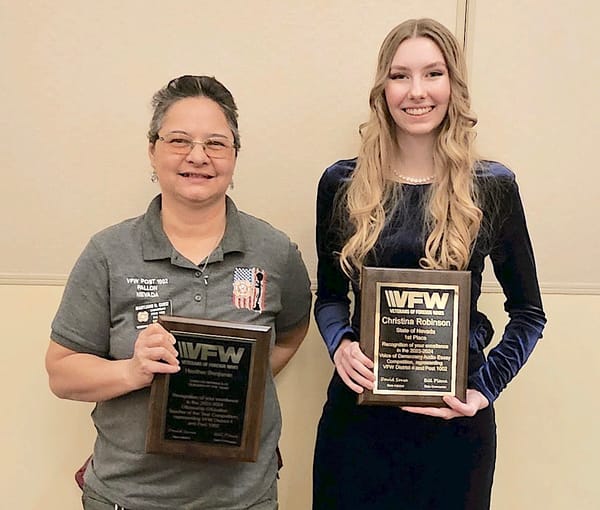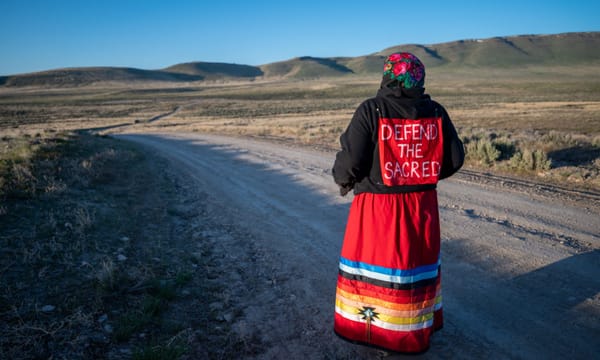Judge grants pause on geothermal construction near sacred hot springs, rare toad habitat

by Jeniffer Solis, Nevada Current
A Nevada tribe succeeded Tuesday in getting a district judge to temporarily pause construction of a planned geothermal energy project near the Dixie Meadows Hot Springs, a site considered sacred to the tribe.
U.S District Judge Robert Clive Jones granted a 90-day pause that will temporarily prevent construction of the Dixie Meadows geothermal energy project, proposed by developer Ormat Technologies.
The Fallon Paiute-Shoshone Tribe requested a halt on construction that was scheduled to start Jan. 6 while the tribe’s lawsuit works its way through Nevada courts. The tribe is seeking to permanently prevent the construction of the power plant near the springs, arguing that its approval violates federal law.
Jones expressed concern over what he said was a lack of a typical environmental impact study and proposed mitigation measures to address possible impacts to Dixie Meadows as a result of the geothermal energy project, including its potential to dry up the spring.
“There’s nothing that will tell us whether or not it will have an impact on the spring itself, let alone the tribes,” Jones said. “I have substantial concerns.”
Possible impacts on the tribe’s ability to practice cultural and religious ceremonies on the sacred site as a result of construction without a mitigation plan also concerned the judge.
“A mitigation plan would say ‘here are the concerns and this is why there will be no significant impact,’” Jones said. “These plans say something different. It says they will be determined after the fact, after the first stage of the plan is built and after the damage to the surrounding areas has occurred.”
The proposed project would include two geothermal power plants, 18 or more geothermal wells, access roads, and 48 miles of transmission line on about 2,000 acres of public land in Dixie Valley in north-central Nevada, adjacent to the Dixie Meadows Hot Springs.
The Bureau of Land Management previously determined that the planned geothermal energy project by Ormat would not have a significant effect on the environment, a finding that does not require an environmental impact study. The agency instead reached an agreement with the developer and other agencies to develop a later plan to “lessen, minimize or mitigate the adverse effect to the site” once construction starts.
The court will consider the broader question of whether the BLM erred when it approved the project, as the tribe claims, at a later date.
Concerns expressed by the court mirrored arguments made by council for the tribe during oral arguments, who argued that there is no plan by Ormat and BLM to mitigate possible effects to surface water in the hot springs.
“There is no analysis on whether these mitigation measures would be effective,” said Wyatt Golding, attorney for the Fallon Paiute-Shoshone Tribe. “One of Ormat’s mitigation plans for example is to pipe in replacement water. So Ormat’s going to bring in hot water from somewhere else to maintain the temperature of the spring. But there’s no analysis or discussion in the mitigation plan where this water is going to come from.”
The Center for Biological Diversity, which with the Fallon Paiute-Shoshone Tribe filed the lawsuit against the BLM, say the planned geothermal energy plant would threaten the existence of the Dixie Valley Toad, a recently discovered species of toad unique to the area that is up for possible endangered status. The toads can be found in remote wetlands fed by thermal desert springs on the western edge of the Dixie Valley Playa in Churchill County.
Any change in the temperature of the hot spring could harm the toad and expose it to parasites that cannot otherwise withstand the high temperatures of the spring.
Counsel for Ormat argued the company has invested resources into researching the site for the last six years in order to plan mitigation efforts for any potential effects the project may cause.
“In 2015 Ormat planned a mitigation project and it resulted in the most comprehensive aquatic resources monitoring and mitigation plan that Ormat has ever committed to or implemented,” said attorney Dessa Reimer.
Representatives for the geothermal developer also argued that a delay in the project could cost the company up to $35 million in revenue during the project’s first phase if not operational by the end of 2022.
The Center for Biological Diversity praised the court’s decision to pause construction of the project, adding that they believe the merits of their case to permanently halt the project are strong.
“We have all these reports from all these agencies saying the project is going to dry up the springs,” said Patrick Donnelly, Nevada State Director at the Center for Biological Diversity.“The science is our side.”
He continued,“It’s a temporary reprieve to be sure but there were bulldozers that were supposed to start destroying sacred sites 48 hours from now and that’s not going to happen; that’s a win in my book.”
Nevada Current is part of States Newsroom, a network of news bureaus supported by grants and a coalition of donors as a 501c(3) public charity. Nevada Current maintains editorial independence. Contact Editor Hugh Jackson for questions: info@nevadacurrent.com. Follow Nevada Current on Facebook and Twitter.





